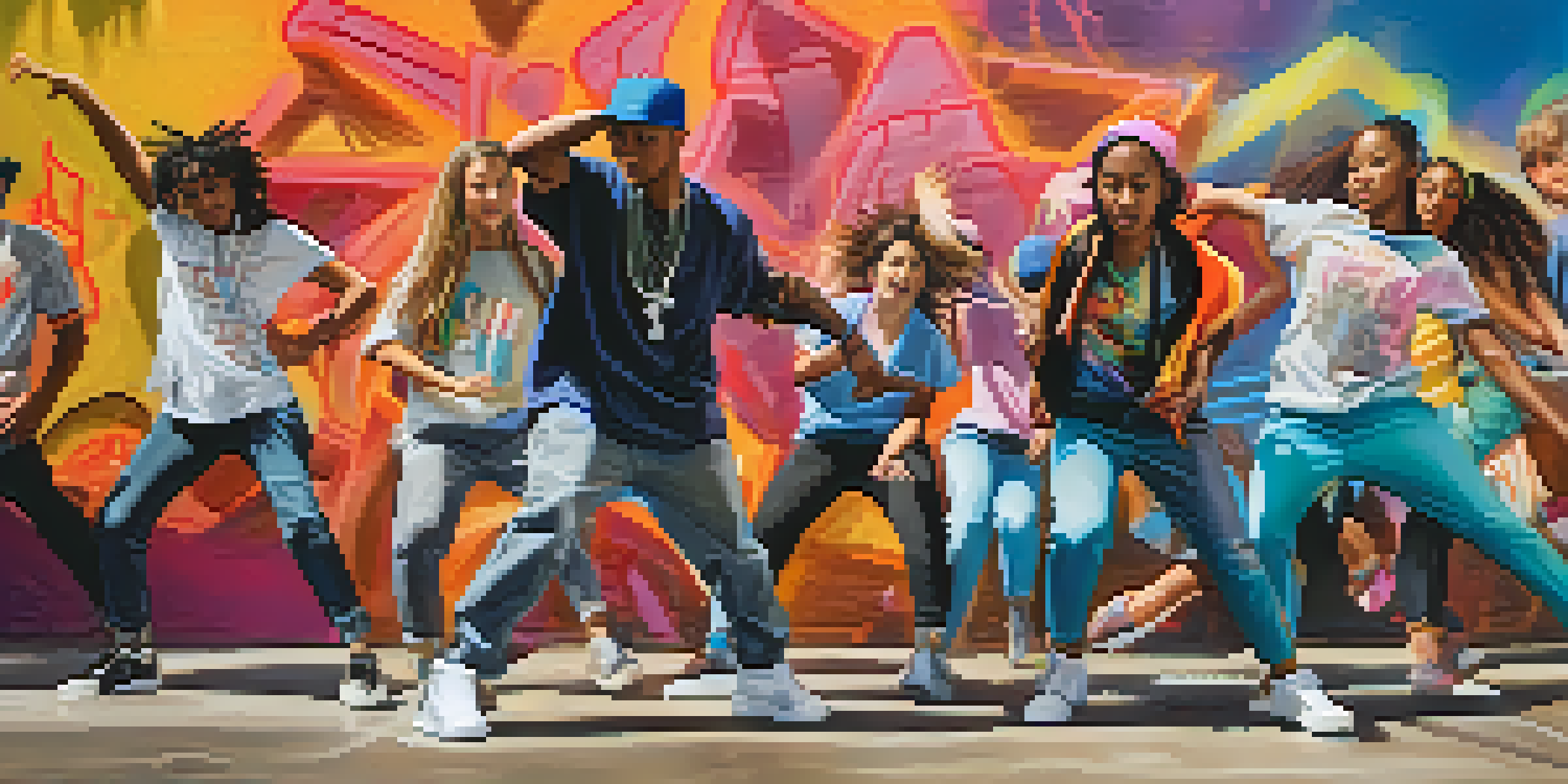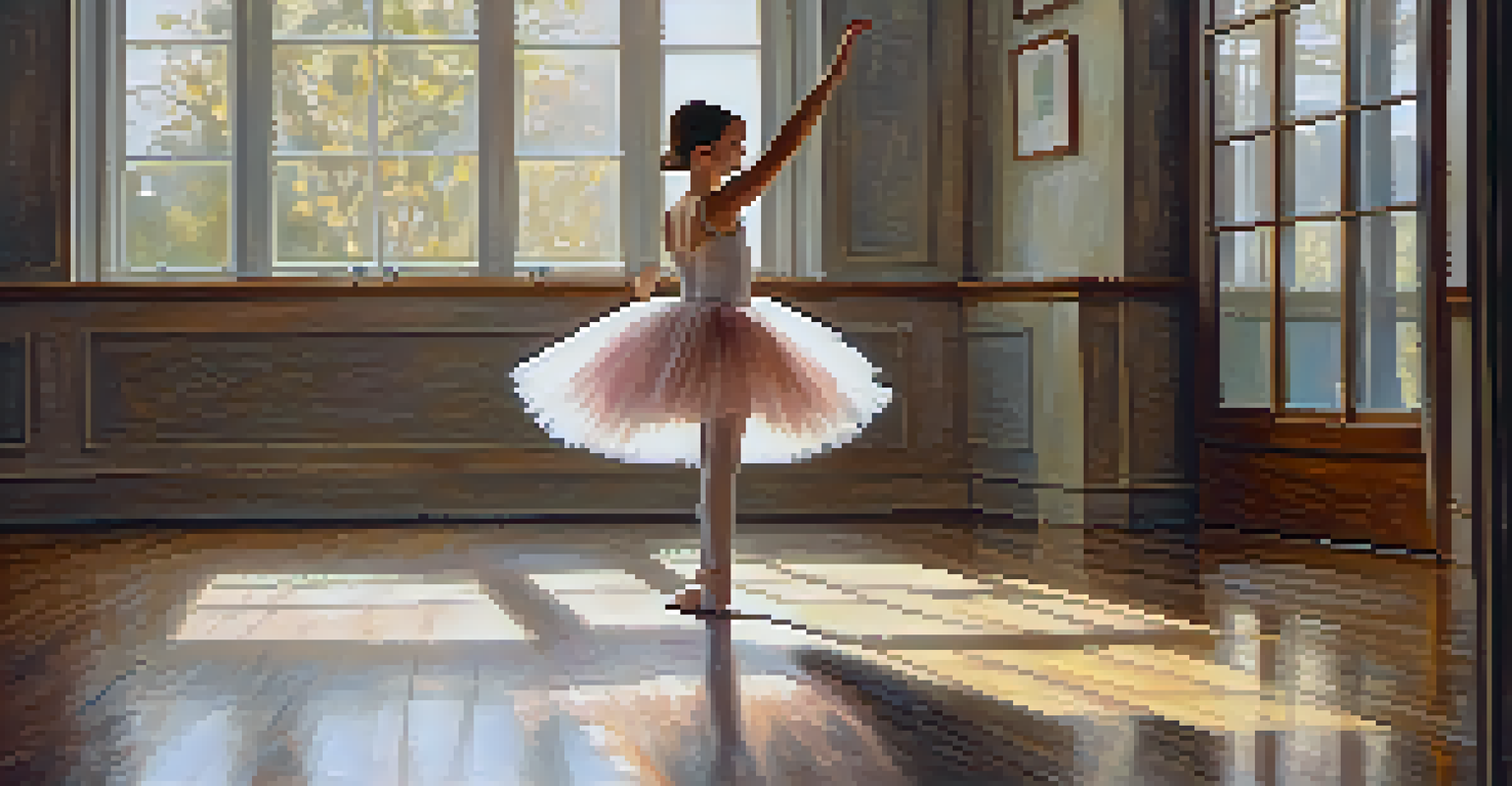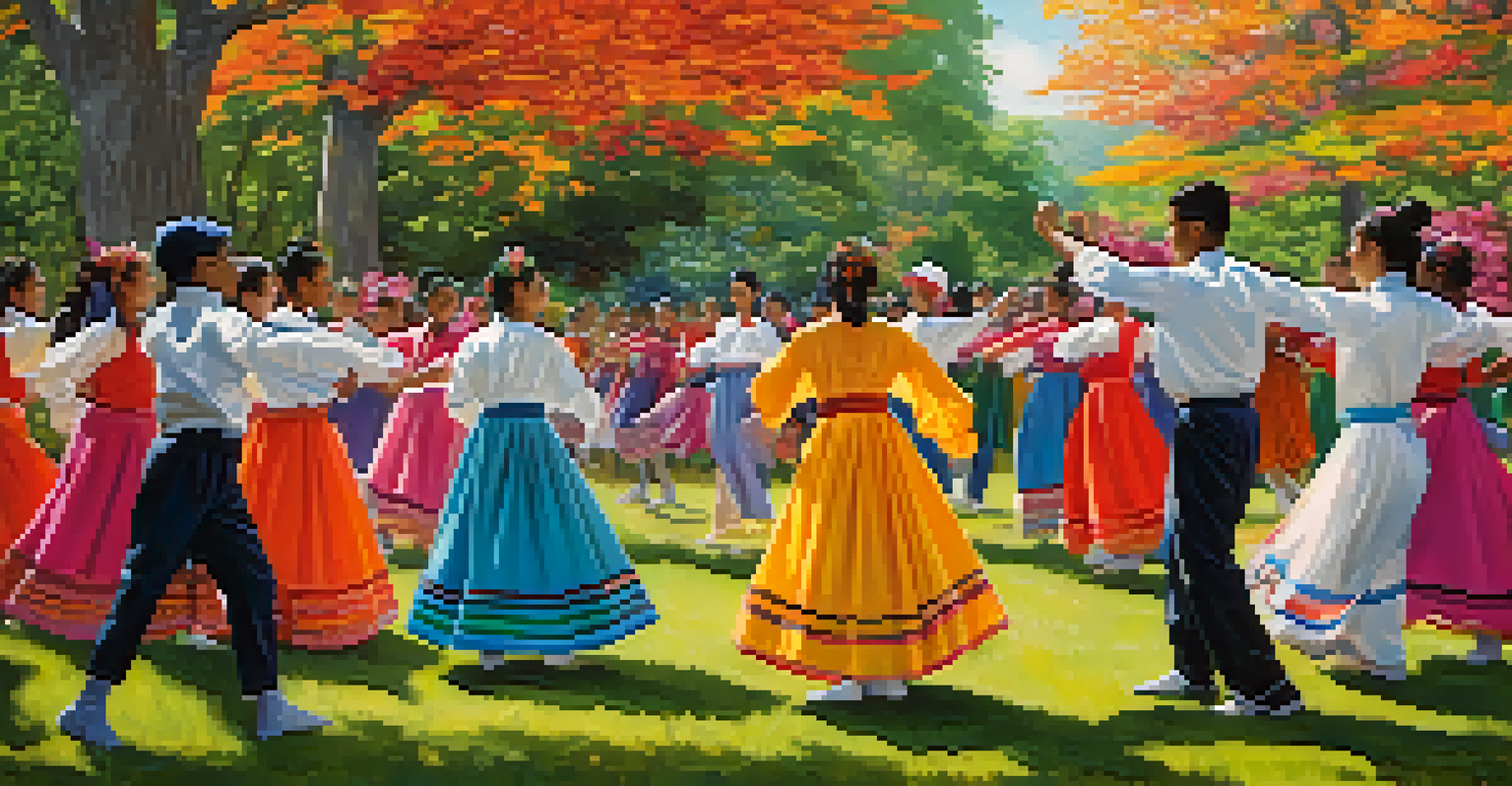Self-Expression and Dance: Empowering Today's Youth

Understanding Self-Expression Through Dance
Self-expression is a vital part of human experience, and dance offers a unique avenue for individuals, especially youth, to express themselves. Through movement, they can share their emotions, stories, and experiences in a way that words sometimes fail to capture. Dance allows for creativity and individuality to shine, making it a powerful tool for personal expression.
Dance is the hidden language of the soul.
Many young people find it challenging to communicate their feelings verbally, which can lead to frustration or isolation. Dance breaks down these barriers, providing a physical language that transcends traditional communication. By moving their bodies, youth can convey joy, sorrow, anger, or freedom, ultimately fostering a deeper understanding of themselves and their emotions.
Moreover, engaging in dance can boost self-esteem, as youth learn to appreciate their unique style and how their body moves. This celebration of individuality encourages them to embrace their identity, resulting in a more confident and empowered generation that feels comfortable expressing themselves.
The Role of Dance in Building Confidence
Dance is not just about movement; it's also about growth. For many young people, learning to dance can be a transformative experience that builds confidence. As they master new skills and techniques, they gain a sense of accomplishment that can translate to other areas of their lives.

Participating in dance classes or performances allows youth to step outside their comfort zones. Each opportunity to perform, whether in front of a small group or a larger audience, teaches them to face their fears and embrace vulnerability. This process not only enhances their skills but also reinforces the belief that they can conquer challenges.
Dance Enhances Self-Expression
Dance provides a powerful outlet for youth to express their emotions and experiences in ways that words often cannot.
Furthermore, the camaraderie found in dance classes fosters a sense of belonging. As students support one another, they build friendships and networks that bolster their self-worth. These connections can be invaluable, providing a solid foundation of encouragement that helps young dancers feel more confident in their abilities.
Dance as a Tool for Emotional Release
Life can be overwhelming for young people, and dance offers a healthy outlet for emotional release. When they dance, they can channel their feelings into movement, allowing stress and anxiety to dissipate. This cathartic experience is essential for mental health, as it encourages a positive way to cope with life's ups and downs.
The dance is a poem of which each movement is a word.
Many dancers describe their practice as a form of therapy, where the rhythm and flow of movement allow them to forget their worries. This emotional release not only feels liberating but also contributes to better overall mental well-being. By expressing themselves through dance, youth can process emotions they might otherwise struggle to articulate.
Additionally, the act of dancing can stimulate the release of endorphins, the body's natural mood lifters. This chemical boost can lead to improved mood and a sense of joy, creating a powerful cycle of positivity that reinforces dance as a beneficial practice for emotional health.
Cultural Awareness and Dance Diversity
Dance is a universal language that transcends cultural boundaries, and it provides an excellent opportunity for youth to explore diverse traditions. Through dance, they can learn about different cultures, stories, and histories, fostering a sense of global awareness and appreciation. This exposure helps cultivate empathy and respect for others, which is essential in today's interconnected world.
Participating in various dance styles—from hip-hop to ballet to traditional folk dances—allows youth to experience a rich tapestry of global cultures. Each style carries its own unique history and significance, providing a deeper understanding of the world around them. These experiences can be eye-opening and transformative for young dancers, broadening their perspectives.
Building Confidence Through Dance
Engaging in dance helps young people develop confidence by mastering skills and stepping out of their comfort zones.
Moreover, engaging with diverse dance forms promotes inclusivity and acceptance. When youth celebrate different styles and the stories behind them, they learn to appreciate the beauty in diversity, which is crucial for building harmonious communities.
The Social Benefits of Dance for Youth
Dance is inherently social, often bringing together people from various backgrounds and experiences. This social aspect of dance creates a sense of community, allowing youth to connect with others who share similar interests. These connections can lead to lifelong friendships and support networks that enrich their lives.
In dance classes or groups, young people learn the value of teamwork and collaboration. Whether forming a dance crew or participating in group routines, they understand the importance of working together to achieve a common goal. This experience can help them develop essential social skills that are transferable to other areas of life, including communication and problem-solving.
Additionally, the shared experience of performing fosters a sense of belonging. When youth take the stage together, they celebrate each other's successes, creating an environment of encouragement and positivity. This sense of community can be a lifeline for many young people, providing the support they need to thrive.
Incorporating Dance into Education
In recent years, educators have recognized the value of incorporating dance into the curriculum as a means of promoting self-expression and creativity. Schools that include dance programs create environments where students can explore their emotions and enhance their learning experiences. This integration not only benefits students' artistic development but also their emotional and social growth.
Dance education can also improve physical health, encouraging students to stay active while developing their coordination and motor skills. When children and teens engage in dance, they cultivate a love for movement that can lead to healthier lifestyles. This physical activity is essential for overall well-being, especially in an age where sedentary behavior is common.
Dance Fosters Community and Belonging
The social aspect of dance creates a sense of community, allowing youth to connect, collaborate, and build lasting friendships.
Furthermore, dance can enhance cognitive abilities by promoting focus, memory, and critical thinking. Learning choreography requires concentration and mental agility, skills that are beneficial in academic pursuits. By incorporating dance into education, we are nurturing well-rounded individuals prepared to face the challenges of the future.
The Future of Dance and Youth Empowerment
As we look to the future, the role of dance in empowering youth is more important than ever. With the rise of digital platforms, young dancers have unprecedented opportunities to share their work and connect with others globally. This access not only amplifies their voices but also encourages collaboration and innovation within the dance community.
Moreover, as social movements continue to inspire change, dance serves as a powerful medium for youth to express their beliefs and advocate for important causes. Through dance, they can raise awareness, share their stories, and unite for a common purpose. This involvement fosters a sense of agency and responsibility, empowering them to make a difference.

Ultimately, supporting youth in their dance journeys lays the groundwork for a future where self-expression, creativity, and empowerment are prioritized. By embracing the transformative power of dance, we can cultivate a generation that values emotional well-being, cultural awareness, and social connection.